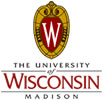Printing Update
We are very pleased to report that February's printing totals were down 33% from February 2004. We really appreciate everyone's efforts. This is a great example of the way a cooperative should work. As long as the current trend continues, we can avoid individual quotas and charge-backs.
We have received a few inquiries about tools for monitoring individual printing balances and ways to correct individual balances when printing errors occur. These kinds of tools cost money and staff time and would more than offset any savings we attain by reducing printing totals. As long as everyone remains as conscientious as they have been so far and follows SSCC's printing guidelines, we will not need this kind of precise and costly accounting.
A few people pointed out that the yellow cover sheets on the print outs were counting pages differently (by pages vs. by sheets of paper) depending on the print queue the job was submitted to. We have fixed this problem and now all the print queues count pages the same way. Again though, concentrate on reducing your overall printing totals by following SSCC's printing guidelines rather than worrying about how pages are counted.
Old 4411 and 7413 Print Queues Removed
The old 4411 and 7413 print queues no longer redirect print jobs to the 4218 computer lab. These queues were removed Thursday, March 3, as announced last month in SSCC News. If you still have these old queues defined, you need to remove them and then add the 4218 queue(\\print\sscc4218). It only takes a minute to delete and create print shares. Instructions are provided in SSCC's Publication, Setting Up Network Printers in Windows.
A New KITE
KITE, one of SSCC's two interactive LINUX servers, has been replaced with a dual 3.2Ghz Xeon server with 4Gb of RAM making it SSCC's fastest Linux computer. HAL, SSCC's other interactive LINUX server, is a dual 2.4 Ghz Xeon server with 4Gb of RAM.
SAS and STATA are installed. MatLab is also installed but is not operational due to a licensing problem. We are waiting for a new license from MathWorks. For a complete list of software available on KITE, visit SSCC's software page.
SSCC Spring Training Schedule
We have four more training sessions scheduled for the month of March: Setting Up a Home Network, Making Your Mailers Look and Work the Same, How to Tune Up Your PC, and Formatting Your Dissertation in Word. Visit SSCC's training web pages for details and registration information. Remember that all SSCC training sessions require preregistration.
Tip of the Month: Useful Windows Keyboard Shortcuts
There are a number of widely-used shortcuts that are nearly universal within Windows-based programs. Some are fairly esoteric, but a number of them are quite useful. Some of the most popular are:
Ctrl-a: select all
Ctrl-c: copy the selected region
Ctrl-x: cut the selected region (it's still on your clipboard,
but gone from the original location)
Ctrl-v: paste what's on your clipboard
Ctrl-z: undo whatever you just did and now wish you hadn't
Ctrl-p: print the selected region
Windows logo-e (on the desktop): open Windows Explorer
Alt-Tab: switch between open programs or windows - this one's
great on the Winterms when you have more than one session running.
There are also many other shortcuts:
Ctrl-b: bold the selected text
Ctrl-i: italicize the selected text
Ctrl-u: underline the selected text
Alt-F4: end the program
Shift-delete: permanently delete the selected item (skip
the Recycle bin)
F5: refresh the current window (in My Computer or Windows
Explorer)
Windows logo-f: open the Find/Search window
Windows logo-r: open the Run dialogue box
You can also type the first letter in a menu drop-down box to go to that letter. For example, in a list of states, type W and you'll go right to the W's and it's much easier to find Wisconsin.
NUM LOCK-*: Display all of the subfolders that are under the selected folder, in Windows Explorer. This is one of the more esoteric.
You can also find many of the keyboard shortcuts that are specific to a program, or that are recognized by that program, in the pull-down menus. The keyboard shortcut is often listed to the right of the desired action in the list. There are comprehensive lists on Microsoft's web site for Windows XP, Windows in general, and Windows 2000.

